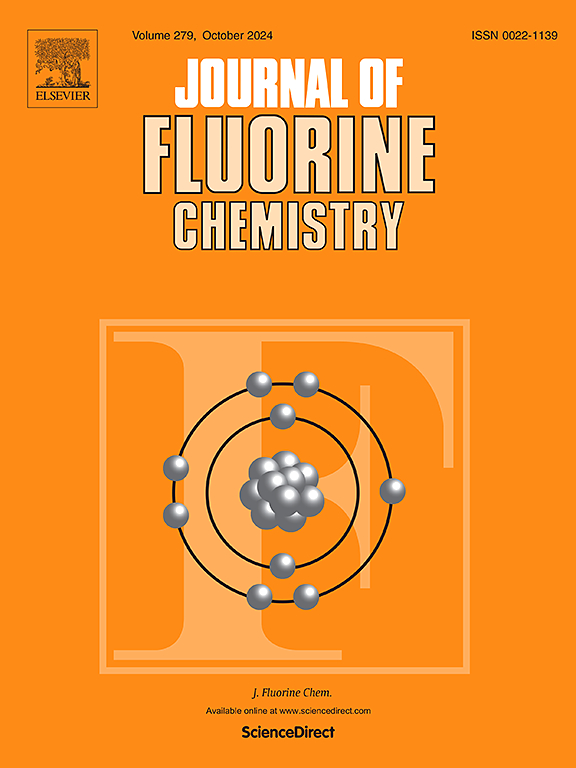Electrophilic aromatic fluorination of N-Arylacetamides: A computational and efficacy study
IF 1.7
4区 化学
Q3 CHEMISTRY, INORGANIC & NUCLEAR
引用次数: 0
Abstract
Using selected N+-F and N-F fluorinating agents, a series of fluorinated N-arylacetamides have been prepared via electrophilic aromatic substitution. Reactant ratios and reaction conditions were varied to ascertain selectivity toward mono-fluorination and to provide optimum conversion to products, which ranged from 0–94 %. In addition, fluorinations of selected N-arylacetamides were undertaken using aqueous and ionic liquid media, sonication and microwave irradiative methods, and were compared with conventional fluorination conditions conducted in acetonitrile. Temperature, reaction time and solvent effects on fluorination as well as trends observed in fluorinating agent reactivity, fluorination selectivity and product distribution for these N-arylacetamides are discussed. A preference for fluorination ortho to the acetamido and trifluoroacetamido groups was observed for most N-arylacetamides investigated. An exception to this trend was found in the case of N-(4-methoxyphenyl)acetamide, where fluorination ortho to the methoxy group predominated. Computationally determined partial charge distribution results for the N-arylacetamides featured in this study were found to support the experimentally observed fluorination regiochemistry.

n -芳基乙酰胺的亲电芳氟化:计算和功效研究
选用N+-F和N-F氟化剂,通过亲电芳代取代法制备了一系列N-芳基酰乙酰胺。改变反应物比例和反应条件,以确定对单氟化的选择性,并提供最佳的产品转化率,范围为0 - 94%。此外,对选定的n -芳基乙酰胺进行了水溶液和离子液体介质、超声和微波辐照的氟化,并与在乙腈中进行的常规氟化条件进行了比较。讨论了温度、反应时间和溶剂对氟化反应的影响,以及氟化剂反应活性、氟化选择性和产物分布的变化趋势。对大多数被研究的n -芳基乙酰酰胺,观察到对乙酰氨基和三氟乙酰氨基基团的氟化邻位的偏好。在N-(4-甲氧基苯基)乙酰胺的情况下发现了这一趋势的例外,其中甲氧基的氟化邻位占主导地位。计算确定的本研究中n -芳基乙酰胺的部分电荷分布结果支持实验观察到的氟化区域化学。
本文章由计算机程序翻译,如有差异,请以英文原文为准。
求助全文
约1分钟内获得全文
求助全文
来源期刊

Journal of Fluorine Chemistry
化学-无机化学与核化学
CiteScore
3.80
自引率
10.50%
发文量
99
审稿时长
33 days
期刊介绍:
The Journal of Fluorine Chemistry contains reviews, original papers and short communications. The journal covers all aspects of pure and applied research on the chemistry as well as on the applications of fluorine, and of compounds or materials where fluorine exercises significant effects. This can include all chemistry research areas (inorganic, organic, organometallic, macromolecular and physical chemistry) but also includes papers on biological/biochemical related aspects of Fluorine chemistry as well as medicinal, agrochemical and pharmacological research. The Journal of Fluorine Chemistry also publishes environmental and industrial papers dealing with aspects of Fluorine chemistry on energy and material sciences. Preparative and physico-chemical investigations as well as theoretical, structural and mechanistic aspects are covered. The Journal, however, does not accept work of purely routine nature.
For reviews and special issues on particular topics of fluorine chemistry or from selected symposia, please contact the Regional Editors for further details.
 求助内容:
求助内容: 应助结果提醒方式:
应助结果提醒方式:


